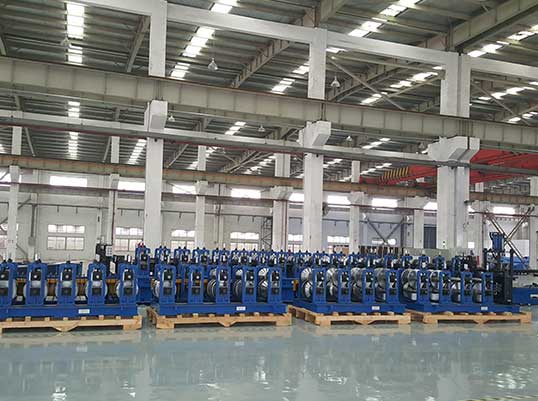Navigation Menu
Contact Us
- Email:
- info@wxavatar.com
- Address:
- Yurong Village, Yuqi Street, Huishan District, Wuxi, China.
Release Date:Jun 12, 2025 Visit:32 Source:Roll Forming Machine Factory
The widespread adoption of solar energy continues to drive advancements across its associated manufacturing processes, and the realm of solar stand roll forming is no exception. This crucial technology, responsible for producing the structural supports for solar panels, is undergoing a period of significant evolution. Several key innovations are currently redefining its capabilities and influencing the trajectory of its future development.

One prominent area of innovation lies in the integration of advanced automation and robotics. Traditional roll forming lines often require substantial manual intervention for material handling, tool changes, and quality control. Modern systems are increasingly incorporating robotic arms for precise material loading and unloading, automated tool changers that drastically reduce downtime, and in-line inspection systems utilizing vision technology. This shift towards greater automation not only boosts production efficiency but also enhances consistency and minimizes human error.
Furthermore, the development of more sophisticated control systems and software is playing a pivotal role. These intelligent systems leverage data analytics and machine learning to optimize various parameters of the roll forming process. This includes real-time adjustments to roll speeds, pressure, and alignment, allowing for the production of complex profiles with tighter tolerances and improved material utilization. Predictive maintenance capabilities are also emerging, enabling manufacturers to anticipate equipment failures and schedule interventions proactively, thereby maximizing uptime.
Another significant trend involves the exploration of novel material handling and feeding mechanisms. As solar panel designs evolve and demand for lighter, yet robust, support structures increases, the ability to process diverse and high-strength materials becomes paramount. Innovations in de-coiling and feeding systems are allowing for more precise control over the material strip, reducing waste, and accommodating a wider range of material thicknesses and grades. This also extends to systems that can handle pre-punched or pre-coated coil, streamlining the overall manufacturing process.
Finally, advancements in tooling design and manufacturing techniques are contributing to the future of solar stand roll forming. The use of advanced computational modeling and simulation allows for the design of optimized roll profiles that minimize material stress and improve part quality. Furthermore, the adoption of additive manufacturing (3D printing) for producing certain tooling components is offering new possibilities for rapid prototyping and the creation of highly complex and customized roll sets. These innovations collectively contribute to a more agile and efficient production environment for solar stand components.

These ongoing developments highlight a dynamic landscape within solar stand roll forming. As the solar industry continues its expansion, the push for greater efficiency, precision, and adaptability within its manufacturing core will undoubtedly continue to drive further transformative innovations.